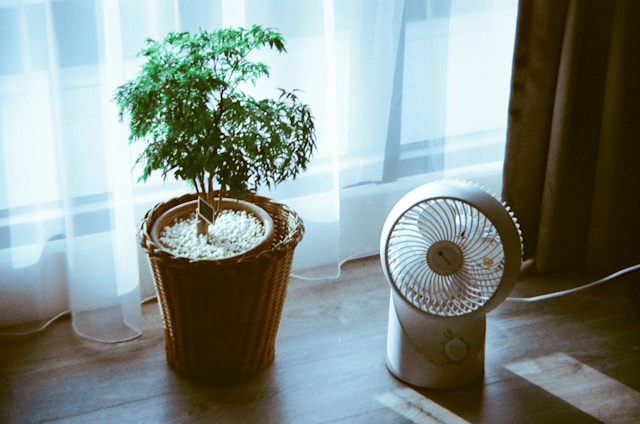Maintaining good indoor air quality is essential for a healthy home environment. Many homeowners are unaware that mold growth and airborne pollutants can significantly affect the health and comfort of those living in the home. Mold not only damages your property but also contributes to allergies, respiratory issues, and long-term health problems. If you’re wondering how to test for mold in your house and improve air quality, this guide covers everything you need to know.
Signs You Might Have Mold in Your Home
Mold is often hidden in places you can’t easily see, such as behind walls, under flooring, or inside air ducts. However, there are some clear signs of mold exposure and contamination you should look out for:
-
Musty or earthy odors in certain areas of the house
-
Visible black, green, or white spots on walls, ceilings, or furniture
-
Persistent allergy-like symptoms such as coughing, sneezing, or skin irritation
-
Worsening asthma or respiratory problems
-
Damp or humid indoor conditions
If any of these symptoms sound familiar, it might be time to take mold testing seriously.
How to Test for Mold in Your House
There are two main approaches when it comes to mold testing: using mold testing kits or hiring a professional inspector. Each has its benefits and is suitable depending on your situation.
1. DIY Mold Testing Kits
Mold testing kits are a convenient and affordable way to check for the presence of mold in your home. These kits can help identify mold spores on surfaces or in the air. Most kits include petri dishes or swabs that you use to collect samples and then send to a lab for analysis.
To use a mold testing kit:
-
Follow the instructions carefully to collect air or surface samples.
-
Seal the sample and send it to the provided lab address.
-
Wait for the results, which are typically delivered in a few days.
These kits are ideal for those who suspect minor mold issues or want a preliminary check before calling in a professional.
2. Professional Mold Inspection
While DIY kits are helpful, they don’t always tell the full story. For a more accurate and detailed assessment, it’s best to hire a certified mold inspector. Professional mold inspection involves:
-
Thermal imaging to detect hidden moisture
-
Air sampling to identify mold spore concentration
-
Surface testing to determine mold type and severity
-
Inspection of HVAC systems and hard-to-reach areas
This method is especially recommended if there is visible mold growth, significant water damage, or ongoing health issues in the home.
Understanding Mold Testing Kits
Before purchasing, it’s important to understand the different types of mold testing kits available:
-
Air sample kits: These detect airborne mold spores and are helpful when there is no visible mold but you suspect contamination.
-
Surface sample kits: These are used to swab visible mold spots to determine the type and severity.
Keep in mind that while mold testing kits are helpful, they have limitations. They don’t always indicate the exact location of mold growth, and improper sample collection can lead to inaccurate results.
Professional Mold Inspection Tips
When choosing a professional mold inspector:
-
Look for certification from organizations like the IICRC or NORMI.
-
Ask for references or online reviews.
-
Ensure they provide a detailed report with lab results and recommendations.
Although more expensive than DIY kits, a professional inspection provides peace of mind and a clear action plan.
How to Improve Air Quality Indoors
Improving indoor air quality is just as important as removing mold. Pollutants like dust, pet dander, volatile organic compounds (VOCs), and mold spores can degrade air quality without any obvious signs.
1. Use Air Purifiers for Mold and Allergens
High-efficiency air purifiers with HEPA filters are excellent tools for removing airborne mold spores, pollen, and dust. Look for models with UV-C or activated carbon filters for enhanced performance.
2. Control Humidity Levels
Mold thrives in moist environments. To prevent growth:
-
Use a dehumidifier in damp areas like basements or bathrooms.
-
Fix leaky pipes and roofing immediately.
-
Keep indoor humidity between 30% and 50%.
3. Improve Ventilation
Proper airflow helps maintain fresh air indoors and reduces moisture buildup. Tips to improve ventilation include:
-
Opening windows and doors when weather permits
-
Using exhaust fans in kitchens and bathrooms
-
Cleaning air ducts regularly
4. Clean and Maintain HVAC Systems
Your heating and cooling system can harbor dust, mold, and bacteria if not maintained properly. Replace air filters regularly, schedule professional duct cleaning, and ensure your HVAC system is working efficiently.
5. Use Natural Air-Purifying Houseplants
Certain plants like spider plants, peace lilies, and snake plants can absorb toxins and improve air quality. While not a substitute for ventilation or filtration, they make a good supplementary strategy.
6. Perform a Home Air Quality Test
You can purchase a home air quality test kit to detect levels of carbon monoxide, VOCs, radon, and particulate matter. Some advanced smart monitors provide real-time air quality feedback and suggestions.
When to Seek Professional Mold Remediation
If mold covers an area larger than 10 square feet, or if it’s present in your HVAC system or behind walls, you should call in a mold remediation specialist. These professionals will:
-
Contain and remove contaminated materials
-
Sanitize affected areas
-
Use air scrubbers to clean the air
-
Address underlying causes such as leaks or ventilation issues
Trying to clean large mold infestations yourself can release more spores into the air and cause health risks.
Conclusion
Knowing how to test for mold in your house and take steps for indoor air quality improvement is essential for maintaining a healthy, comfortable home. From using mold testing kits to investing in air purifiers and professional inspections, the right approach depends on your specific situation. Don’t ignore signs of mold exposure tackling mold early and enhancing your indoor air environment can protect both your home and your health.









